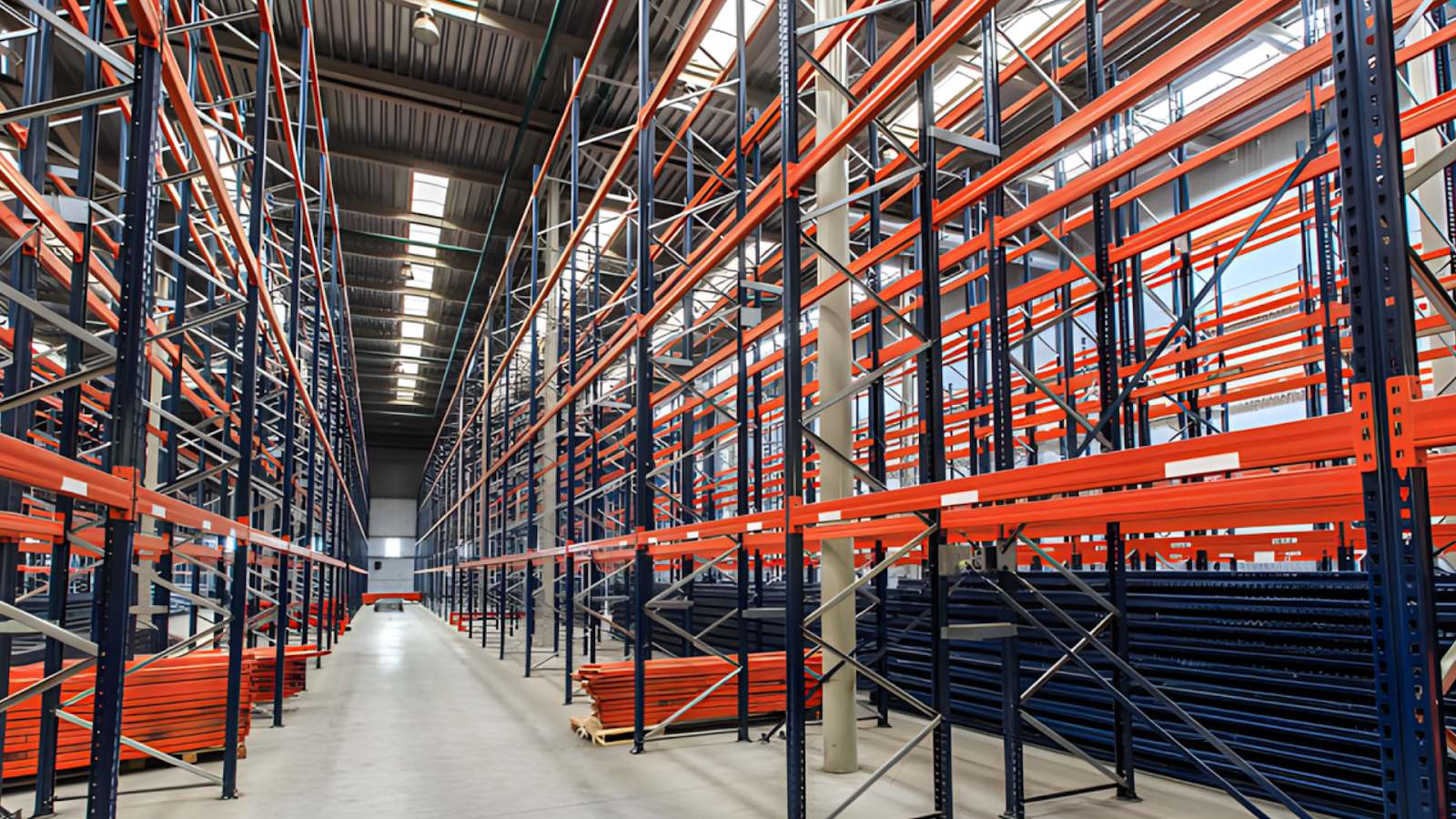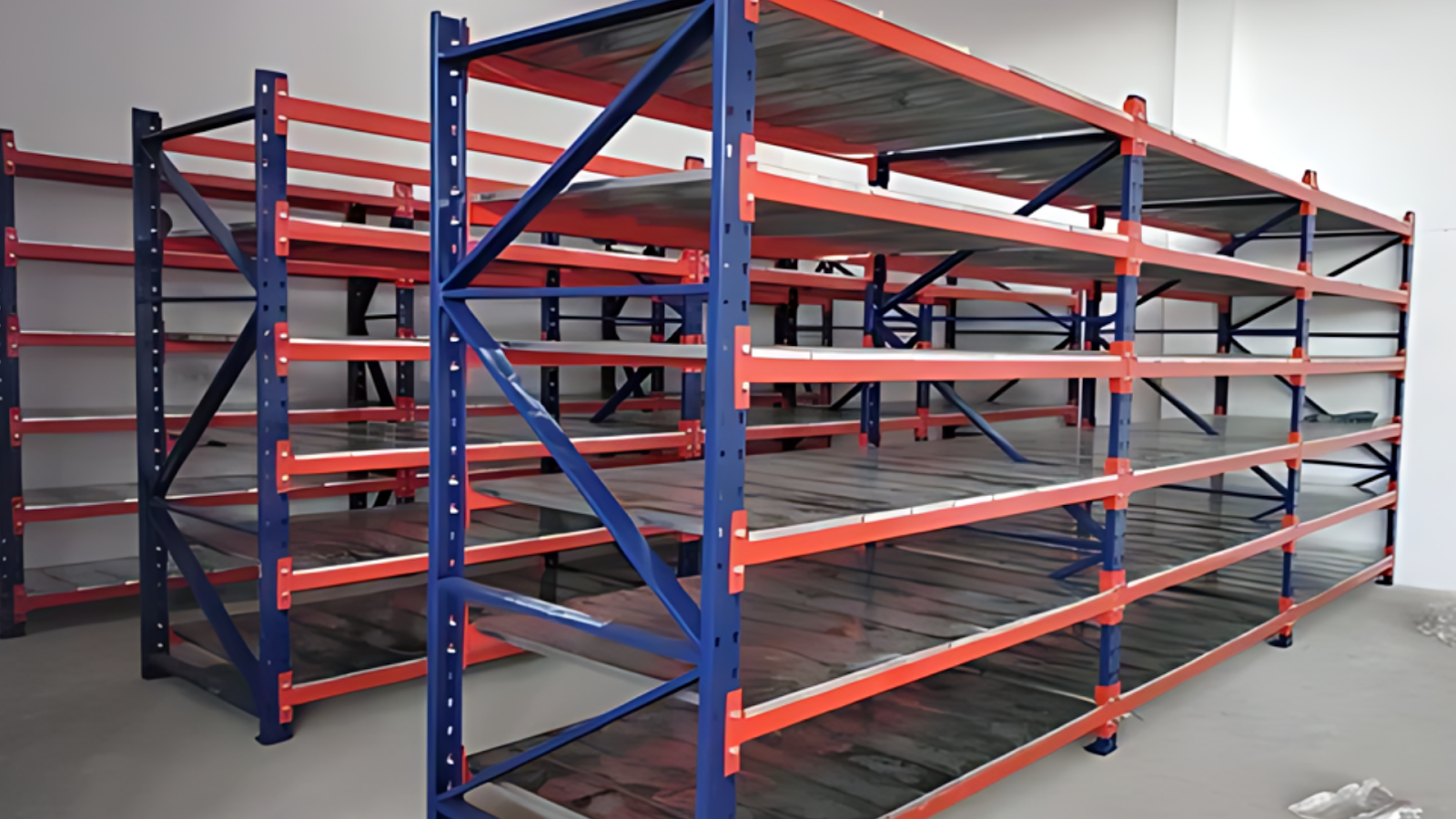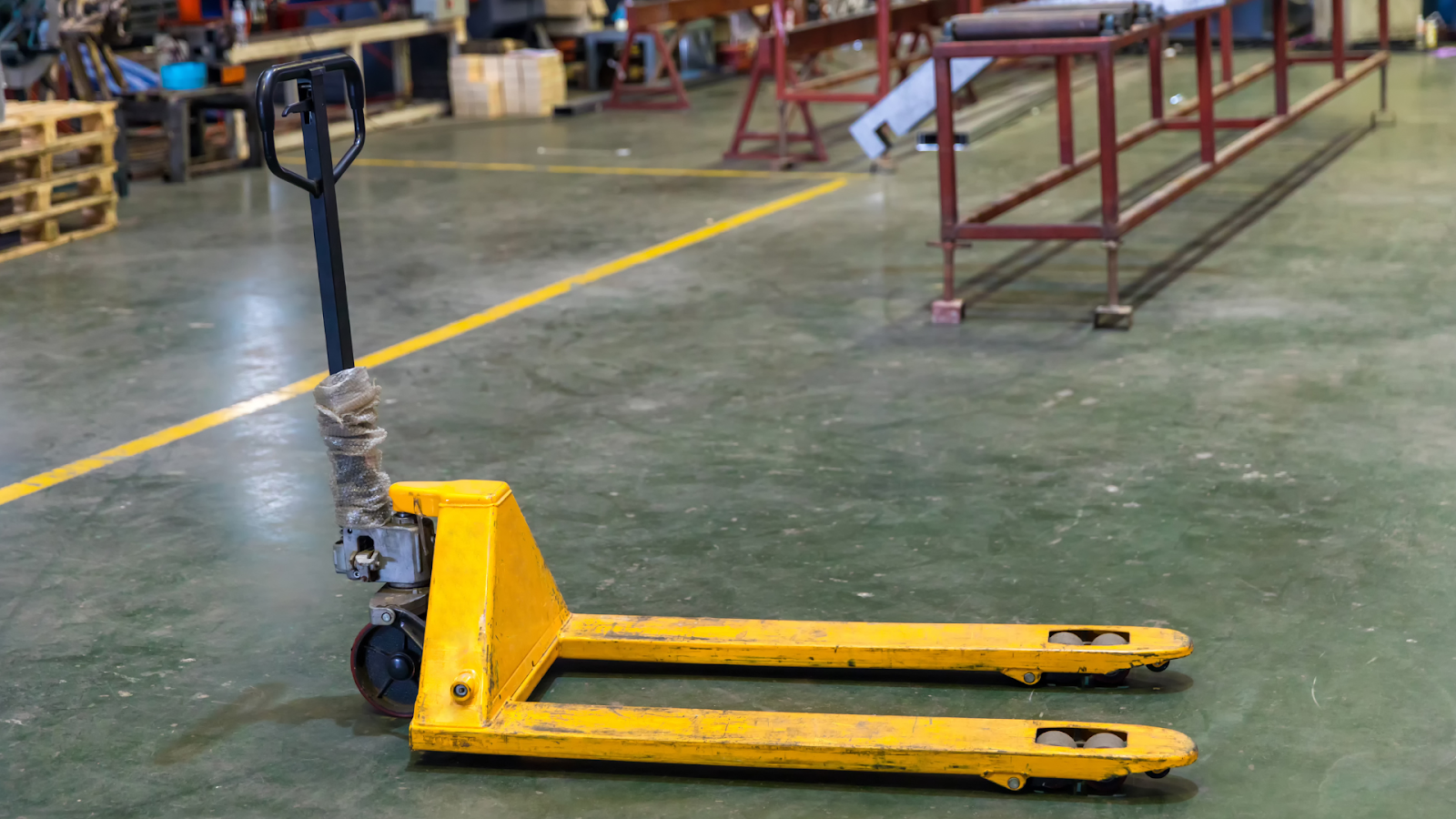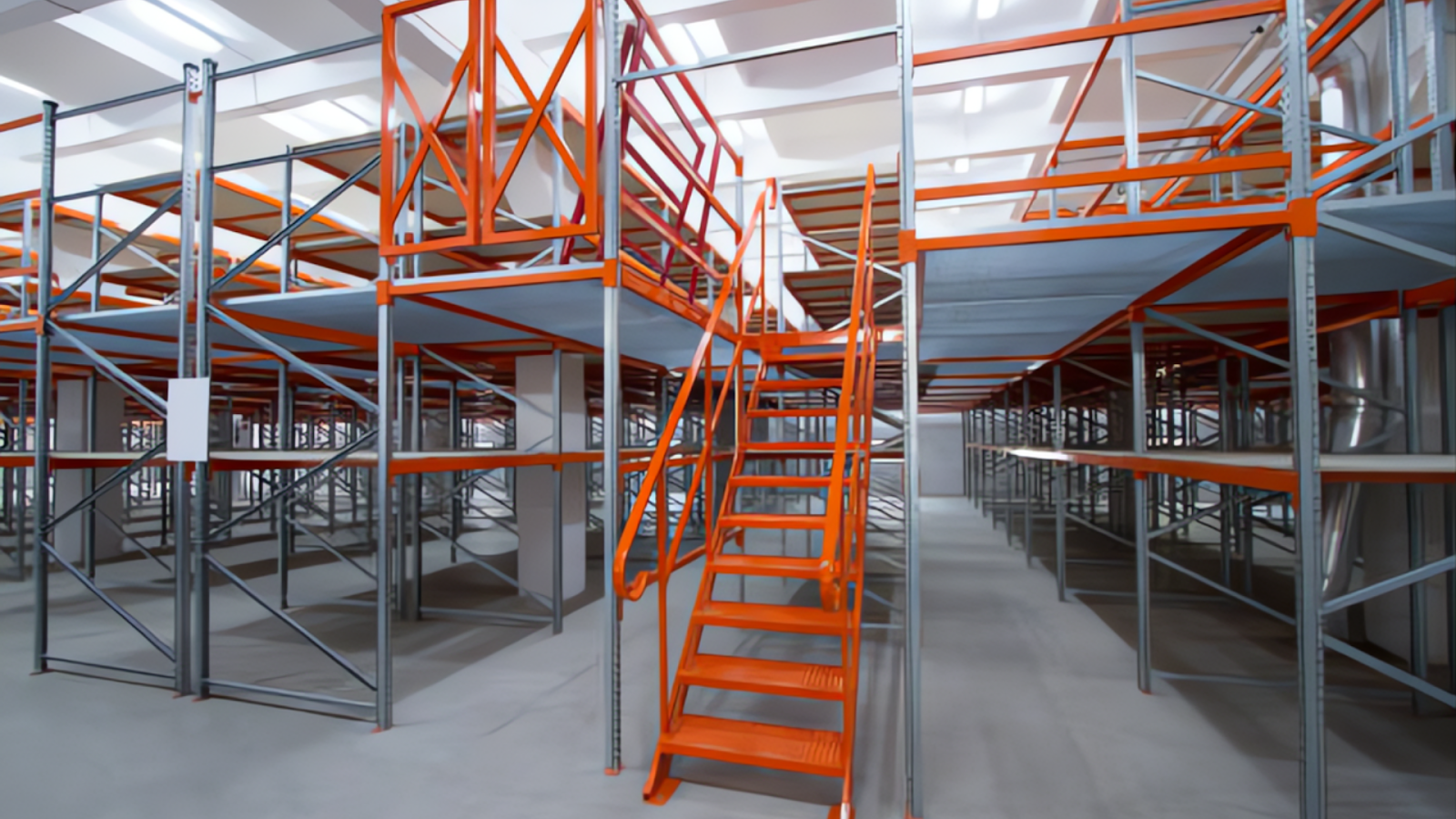Efficient warehouse racking is the backbone of organized storage and faster order fulfillment. For most operations managers, the right racking system determines how quickly goods move, how safely items are stored, and how effectively space is utilized.
As storage demands grow across industries, rack design and configuration have evolved to handle higher volumes, increased SKU diversity, and advanced automation.
In fact, the global warehousing market is projected to reach USD 1.73 trillion by 2030, growing at a CAGR of 8.1% from 2024 to 2030. Much of this growth comes from the logistics, retail, and manufacturing sectors, optimizing their facilities with advanced pallet racking solutions.
To help you make informed decisions, this blog explains the most common types of warehouse storage racks, how they function, and what to consider when choosing one for your facility.
Warehouse storage racks are steel structures that let you store goods vertically, freeing up valuable floor space and improving organization. They are essential for keeping products accessible, safe, and easy to handle in busy facilities.
Each system is designed for specific load capacities, pallet sizes, and picking methods, directly affecting warehouse safety.
A typical rack includes upright frames, beams, braces, decking, and safety parts like wire decks or guards. Racks handle palletized loads, while shelving suits lighter, hand-loaded items.

Warehouse racks are generally classified by storage density and inventory movement. Below are the most widely used types by U.S. manufacturers.
Selective racks are the most common warehouse racking system across the U.S. Each pallet is accessible without moving another, making this the preferred choice for facilities managing a wide range of SKUs or frequent product turnover.
Selective racks consist of upright frames and horizontal beams that create adjustable pallet positions. They offer 100 % access and are compatible with most forklifts. Facilities use them for bulk consumer goods, fast-moving inventory, or staging zones where quick retrieval matters.
Manufacturers design selective racks for flexibility. For example, beam heights can be reconfigured easily, and load capacities can reach over 5,000 lbs per level. However, the system requires more aisles, which limits storage density compared to compact designs.
FMCG, third-party logistics, and retail distribution centers often rely on selective racks for their accessibility and ease of reconfiguration. Many Source Equipment customers often pair Husky Rack & Wire selective racks with wire decking for enhanced safety and visibility.
Also Read: Standard Pallet Sizes and Dimensions Guide
Double-deep systems store pallets two rows deep per aisle, doubling capacity while maintaining structured organization.
The first pallet sits in front of the second, requiring a deep-reach truck to access the rear position. It is ideal for warehouses with medium SKU counts and uniform product types that do not require frequent rotation.
Storage density improves by about 25–30 %, but only the front pallet in each lane is immediately reachable. This trade-off suits environments with moderate throughput rather than fast-pick operations.
Facilities must use deep-reach forklifts with extended mast assemblies. Proper aisle width and operator training are important to prevent beam impact and maintain OSHA safety compliance.
These systems support high-density storage by allowing forklifts to drive directly into the rack structure. They are commonly found in cold storage, beverage, and bulk commodity warehouses.
Because of their compact footprint, these racks maximize cubic utilization, which is essential for frozen foods, dairy, or high-volume SKUs that move in consistent batches.
Manufacturers reinforce uprights with thicker gauge steel, guide rails, and impact-resistant columns to handle frequent forklift contact. Distributors like Source Equipment ensure every installation includes proper guard rails and anchoring for long-term stability.
Before investing in or upgrading your racking system, it’s important to confirm that your equipment meets current U.S. safety and engineering standards for load performance and durability.
Ready to verify your system’s compliance?
Get our detailed guide outlining RMI, FEM, and OSHA rack standards, covering materials, load testing, and safety benchmarks.
Access the Compliance Guide now!
Push-back systems combine density and selectivity through nested carts that ride on inclined rails. Pallets automatically move forward by gravity as front loads are removed.
Each lane typically holds two to six pallets, allowing high-volume storage from a single aisle. The sloped design reduces forklift travel, saving time and energy.
Ideal for packaged goods, consumer products, and food distribution centers where multiple pallets of identical items are stored together.
Precision in rail alignment and cart design ensures smooth motion without jamming. Besides, high-quality fabrication delivers reliable performance for thousands of load cycles.
Pallet flow racks enable automated inventory rotation using gravity rollers that move pallets from the loading to the picking face; ideal for FIFO operations.
Each lane features rollers, speed controllers, and braking devices that regulate pallet movement. The design guarantees that the oldest stock exists first, minimizing spoilage.
Common in pharmaceutical, cold-chain, and beverage operations where consistent product rotation and traceability are required for safety and compliance.
Even slight errors in slope angle can affect flow rate. Manufacturers perform load testing for pallet weight, roller spacing, and braking resistance to ensure smooth, safe motion. The result is faster throughput with minimal human handling.
Cantilever racks are designed for long, irregular, or bulky items such as lumber, metal tubing, and furniture. Their open-front structure eliminates vertical obstructions, providing full access to materials.
Horizontal arms extend from vertical columns, supporting loads of varying lengths and weights. Forklifts can easily lift or deposit items along the open face.
Manufacturers offer configurations ranging from light-duty models for aluminum profiles to heavy-duty steel systems for structural beams and piping. Weight ratings depend on arm length, column spacing, and anchoring depth.
Designing for uneven loads requires precise calculations to prevent deflection. U.S. manufacturers incorporate bolted or welded arms, ensuring stability and interchangeability during expansion.
Mobile racks sit on motorized bases that move along floor tracks, condensing aisles until access is needed.
The system increases capacity by up to 80 % compared to fixed racks, making it ideal for facilities with limited square footage.
Used extensively in cold rooms, pharmaceuticals, and high-value parts storage, mobile racks minimize the number of open aisles, helping reduce energy costs in temperature-controlled environments.
Modern designs include floor sensors, safety locks, and remote operation features. Manufacturers test drive mechanisms for consistent movement under load, while distributors ensure floor integrity and power alignment during installation.
Carton flow and longspan systems merge manual picking and pallet storage within the same area.
Carton flow racks use lightweight rollers or wheels that feed products to the front for ergonomic picking. Longspan shelving provides adjustable shelves for bulkier cartons.
These systems are used in e-commerce fulfillment, spare-parts logistics, and packaging departments. When paired with pallet racks above, they create a multi-tier hybrid zone that maximizes both picking speed and space utilization.
Mezzanine racking systems expand usable space vertically, turning overhead clearance into productive square footage.
They combine heavy-duty rack frames with steel decking, stairways, and safety rails, creating elevated platforms for storage or assembly.
Manufacturers design these systems according to ANSI MH16.1 and OSHA safety codes, verifying beam spacing, handrail strength, and live-load capacity. Common in automotive and aerospace warehousing, mezzanines enable growth without structural expansion.
Automation-ready racks are engineered for seamless integration with robotics, conveyors, and vertical lift modules, forming the foundation of the modern smart warehouse.
As order volumes increase, warehouses use Automated Storage and Retrieval Systems (ASRS) to handle inventory with minimal human intervention. These racks support robotic shuttles and automated cranes.
Manufacturers fabricate these racks with precise bay tolerances, reinforced uprights, and sensor-mounting provisions to support automation.
Also Read: What to Do if Racking is Damaged: Quick Fixes & Safety Measures?

Selecting the right racking system requires understanding operational flow, inventory type, and handling equipment. This section helps decision-makers connect functional needs with system design.
Every warehouse rack must be engineered for uniform load distribution. Ignoring pallet dimensions leads to uneven beam stress, structural imbalance, and premature frame fatigue under operational loads.
Facilities managing diverse SKUs benefit from selective racks, ensuring quick access. Bulk or repetitive goods, however, perform best with drive-in or push-back storage systems.
FIFO inventory, common in food, beverage, and pharmaceutical sectors, requires pallet flow or drive-thru racking systems to ensure precise rotation and prevent product expiration.
Full-pallet movements work efficiently in deep-lane configurations, while case or piece-picking zones operate best using carton flow or longspan shelving with ergonomic access.
Taller warehouses can enhance cubic capacity through double-deep or multi-level racks, balancing density, safety, and forklift clearance within OSHA-recommended aisle specifications.
Smart investment means evaluating total lifecycle costs, design, installation, maintenance, and adaptability. This way, you ensure rack systems remain efficient and expandable as operations scale.

Even robust racks can fail when engineering principles are ignored. These errors often appear minor but can undermine safety, throughput, and structural integrity over time.
Exceeding rated capacities stresses beams, frames, and anchors, leading to deformation and instability. Always follow manufacturer plaques and account for static and dynamic load variations accurately.
Unverified floor thickness, slab level, or seismic conditions compromise rack anchoring. Conduct certified floor inspections and apply RMI-compliant bracing before installation to maintain structural stability.
Mismatched forklifts can damage beams, frames, and pallets. Select lift equipment matching rack geometry, mast height, and turning radius to prevent collisions and ensure OSHA-compliant operations.
Improper aisle width and traffic alignment create bottlenecks, idle equipment, and unsafe access. CAD-based planning ensures optimal flow, product velocity, and regulatory compliance throughout facilities.
Pro Tip: Working with an experienced distributor like Source Equipment ensures every system is configured to OSHA and RMI standards for both safety and efficiency.
Also Read: A Brief Guide to Warehouse Racking Weight Capacity Basics

Not every racking system delivers the same performance. The depth of engineering behind a manufacturer’s design directly determines structural reliability, assembly precision, and long-term load stability.
Reputable U.S. manufacturers follow disciplined fabrication standards, precision welding, automated powder coating, and rigorous dimensional checks to maintain uniform strength across every upright and beam. Many provide advanced CAD modeling, seismic load validation, and field inspection services to verify system alignment before turnover.
When comparing suppliers, assess their compliance with:
Partnering through an experienced distributor such as Source Equipment Co. streamlines this evaluation. Clients gain access to multiple certified brands, expert layout assistance, and guaranteed regulatory conformity through a single, accountable partner. Plus, expertise matters too. With over 30 years of experience in the industry, Source Equipment is the ideal partner for all your warehouse storage needs.
Modern warehouses are adapting rapidly to meet e-commerce and omni-channel demands. Four trends are shaping new racking investments:
These innovations reflect a shift toward safer, smarter, and more adaptable storage systems across U.S. facilities.
Every warehouse has a unique balance between access, density, and throughput. From selective and double-deep systems to pallet flow and automation-ready racks, each design serves a specific operational goal.
For U.S. businesses aiming to modernize their facilities, Source Equipment Co. provides access to trusted manufacturers, certified racking systems, and decades of layout expertise. The result is safer operations, higher capacity, and measurable returns on storage investment.
Looking to upgrade your warehouse? Consult a Source Equipment specialist or request a quote to explore durable, OSHA-compliant racking systems engineered for performance and built to last.
The most popular warehouse storage rack is the selective pallet rack. It offers direct access to every pallet, easy reconfiguration, and compatibility with standard forklifts, making it ideal for high-SKU, fast-moving operations.
Racks are typically named or labeled based on their location and function using alphanumeric codes indicating aisle, bay, and level. This helps streamline inventory tracking, picking accuracy, and warehouse management efficiency.
FIFO (First-In, First-Out) racks, such as pallet flow or drive-thru systems, ensure the oldest inventory is retrieved first. They’re widely used in food, beverage, and pharmaceutical operations requiring strict product rotation.
OSHA does not issue a specific standard for pallet racking systems. However, warehouse storage must comply with OSHA 29 CFR 1910.176(b), requiring materials to be stored safely. Most facilities follow RMI/ANSI MH16.1 engineering guidelines for rack design, anchoring, and inspection.




Ready to Upgrade Your Process Operations?